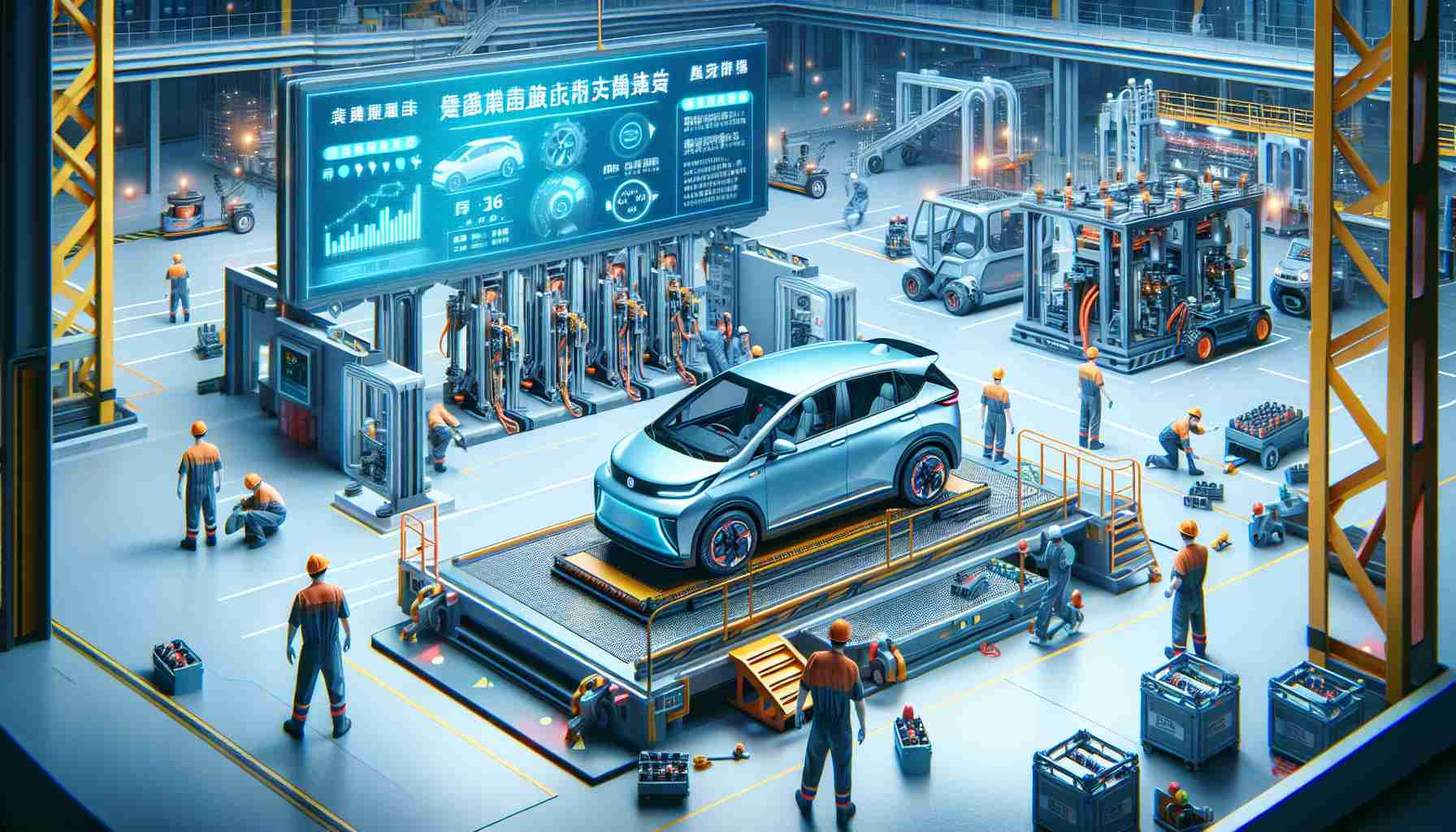China is on the brink of a significant upgrade in electric vehicle (EV) technology, with a focus on battery swapping stations. Global battery manufacturer CATL recently announced plans to heavily invest in this infrastructure next year, signaling a major shift in how EVs might operate.
While battery swapping is not a novel concept, it has faced numerous challenges globally. Adoption rates of electric vehicles vary significantly from region to region, complicating the rollout of robust infrastructure. In essence, battery swapping allows drivers to quickly exchange their depleted batteries for fully charged ones, but this requires specific technology that not all vehicles possess.
China leads the world in EV sales, with a substantial 50% of new car sales being electric as of July. This rapid growth is fueled by supportive government policies and a booming market, making it an ideal candidate for such innovative infrastructure. With consumers increasingly open to the idea of battery swapping, the shift could revolutionize the EV experience.
Startups like Ample are testing modular battery stations that offer swift swaps in just five minutes, alleviating charging time concerns. This could be particularly beneficial for fleet operators, such as rideshare and public transport services, who need to minimize downtime.
While battery swapping presents intriguing opportunities for the future of mobility, it necessitates a transformation in how we view car ownership and infrastructure. The next few years will be crucial in determining whether this technology will gain traction beyond China.
China Drives the Future of Electric Vehicle Efficiency with Battery Swapping Revolution
The Rise of Battery Swapping in China
China is poised to significantly enhance its electric vehicle (EV) technology landscape through an ambitious scale-up of battery swapping stations. The global battery giant CATL has unveiled its plans for substantial investments in this critical infrastructure starting next year, indicating a transformative shift in the operational model of EVs.
Battery swapping, while not a completely new concept, has encountered various obstacles globally, particularly concerning the consistency of EV adoption across regions. The innovative system allows drivers to swiftly exchange depleted batteries for fully charged ones, thereby reducing the downtime typically associated with conventional charging methods. However, the implementation is contingent upon the availability of compatible vehicles equipped with the necessary technology for such exchanges.
China’s EV Market Leadership
As of July, China dominates the global EV market, accounting for a remarkable 50% of all new car sales. This rapid escalation is driven by supportive governmental policies and a burgeoning consumer market ready to embrace EV innovations. The increasing acceptance of battery swapping among the populace could profoundly reshape the EV experience, paving the way for more flexible and efficient transportation options.
Innovative Solutions and Time Efficiency
Startups like Ample are pioneering modular battery stations that enable rapid battery swaps in approximately five minutes. This development could be a game-changer, especially for fleet operators, including rideshare services and public transit, where minimizing operational downtime is crucial. The integration of battery swapping technology offers a potential solution to one of the primary concerns facing the EV market: charging time and accessibility.
Pros and Cons of Battery Swapping
Pros:
– Reduced Downtime: Battery swapping allows for quick exchanges, improving efficiency for users who rely on their vehicles for income.
– Centralized Charging: Enables more effective grid management and the possibility of renewable energy integration.
– Easier Battery Management: Maintains ownership of batteries that can be monitored and serviced more efficiently.
Cons:
– Infrastructure Costs: Establishing battery swapping stations requires significant upfront investment and coordination.
– Vehicle Compatibility Issues: Not all EVs are designed for battery swapping, potentially creating a fragmented market.
– Consumer Acceptance: Shifting perceptions of car ownership could prove challenging as the concept diverges from traditional models.
Future Trends and Insights
The coming years will be pivotal in evaluating whether battery swapping can gain acceptance beyond China. The market dynamics regarding consumer preferences, technological advancements, and regulatory frameworks will play crucial roles. As the EV landscape evolves, companies that can successfully implement battery swapping may find themselves at the forefront of the industry.
Security Aspects and Sustainability
From a security standpoint, battery swapping systems must prioritize the safety and integrity of the batteries during exchanges. It’s essential that robust protocols are in place to ensure user safety and battery performance.
In terms of sustainability, effective battery management through swapping can lead to better recycling practices and lifecycle management, which are vital as the world transitions to greener technologies.
Conclusion
Overall, battery swapping represents a significant innovation in the EV sector, particularly within the context of China’s aggressive push towards electrification. As the infrastructure develops, close attention will be needed to assess its long-term viability and impact on global EV adoption.
For more information on the developments in electric vehicles and battery technology, visit CATL.
